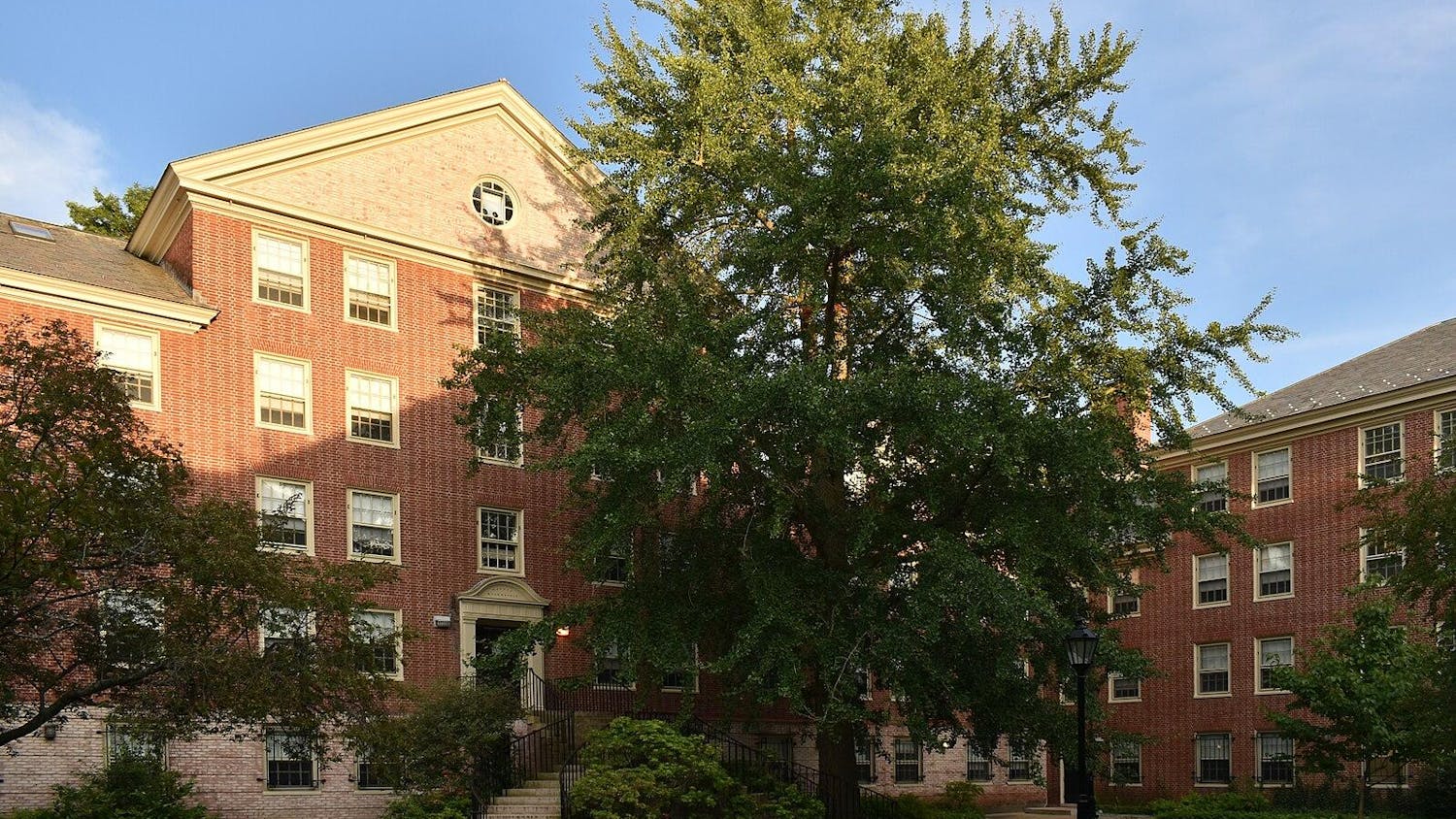Twelve faculty members released a revised version of the University’s diversity action plan, “Pathways to Diversity and Inclusion,” Thursday night. A draft of the University’s diversity and inclusion action plan was released Nov. 19, and the administration created a web form for members of the Brown community to submit feedback until Jan. 8.
The plan, entitled the “5 Percent Plan,” was drafted and signed by Assistant Professor of American Studies Leticia Alvarado, Professor of Africana Studies and American Studies and Chair of American Studies Matthew Guterl, Assistant Professor of American Studies Elizabeth Hoover, Professor of History and American Studies Evelyn Hu-DeHart, Professor of Sociology Jose Itzigsohn, Associate Professor of English and American Studies Daniel Kim, Associate Professor of American Studies Robert Lee, Assistant Professor of American Studies Monica Martinez, Associate Professor of English and American Studies Ralph Rodriguez, Associate Professor of History and American Studies Naoko Shibusawa, Assistant Professor of American Studies Elena Shih and Associate Professor and Chair of Theatre Arts and Performance Studies Patricia Ybarra — all of whom are “tenure-stream” faculty within the ethnic studies concentration.
“As a group, we were quite taken with the comprehensiveness of the first draft of this plan,” the group wrote in the proposal, which described itself as a “friendly rewriting” to “reinvent” Brown. Though the faculty members addressed their plan to President Christina Paxson P’19, the group mentioned that the document is aimed at all faculty members, students and staff members.
The group titled its recommendations the “5 Percent Plan” because it proposes increasing the amount of funds designated to addressing issues of diversity and inclusion from the initially proposed amount of $100 million — just over 3 percent of Paxson’s $3-billion BrownTogether campaign — to $150 million, or 5 percent.
While the original plan was “comprehensive,” the goal of the rewrite is to make the original document “more robust and more dynamic,” Guterl told The Herald. Because of their expertise as scholars in race and racism, the group felt it was fit to make the recommendations, he added.
The “5 Percent Plan” opens by acknowledging the long legacy of activism by the Brown community. The University and other institutions of higher education have “failed to include people of all races, ethnicities, creeds, socioeconomic classes, genders, identities and physical dis/abilities,” the group wrote in the plan.
The University should not only “recruit and retain” at least 60 new faculty members from groups of historically underrepresented minorities but should also work toward promoting faculty members from these groups without changing any standards of excellence, tenure, retention or promotions, the group wrote in the plan.
The University should also offer 30 new graduate fellowships available to departments that wish to increase diversity or have been “historically successful at recruiting minority graduate students,” according to the plan.
The ‘hidden labor of faculty of color’
Both Guterl and Shibusawa pointed to the establishment of professional counseling services in the Brown Center for Students of Color, the LGBTQ Center and the Sarah Doyle Women’s Center as a key recommendation in their plan.
Shibusawa told The Herald some of her colleagues have had to “do so much work for students who just come in — because they have nowhere else to go — and cry.” While members of faculty are more than happy to be there for students in times of need, “this isn’t what we were hired for and certainly not what we were trained to do,” she said.
Due to the absence of professional counselors in these areas, faculty of color have had to take on roles that white faculty do not have, Guterl said, adding that this contributes to the “hidden labor of faculty of color.”
“You don’t want faculty who are untrained … counseling students who are in emotional stress and crises,” he said. “So we wanted to really champion the idea of … a much more robust investment in (Counseling and Psychological Services).”
Disaggregating the data
While collaborating with other members in the group to revise the original plan, Shibusawa said she felt particularly passionate about better disaggregation of information about faculty. “For example, the underrepresentation of Filipinos, Southeast Asians and Pacific Islanders is made invisible in the category Asian American/Pacific Islander,” the plan stated. If we fail to make these distinctions, we fail to see where the problems lie, Shibusawa said.
In addressing the diversification of Brown’s undergraduate population, the “5 Percent Plan” expanded the list of groups the University should focus on from black, Latinx, Native American and first-generation students to also include Southeast Asian, Pacific Islander, low-income and undocumented students.
Whereas the original plan pledged to “make a concerted effort” to bring students from diverse backgrounds to attend A Day on College Hill, the “5 Percent Plan” requested the University double the funding currently available to do so and make it available to students from low-income backgrounds.
Creating new and reforming current programs
The plan also recommended moving the Center for the Study of Race and Ethnicity in America to its own building, as well as developing a program for Native American students similar to Harvard’s Native American program.
The “5 Percent Plan” called for a reevaluation of Brown’s current curriculum, stressing the need to assess whether the Diverse Perspectives in Liberal Learning course designation “serves its intended purpose.” The plan also urged the University to consider what adjustments can be made to the curriculum to “more fully engage issues of social inequality and justice.”
The “5 Percent Plan” also proposes creating an office dedicated to Title VI of the Civil Rights Act of 1964 that would be responsible for handling reports about “bias and exclusion” in a “clear, accessible and fair” manner. The office would also offer workshops to teach faculty members how to help students with such experiences.
Responses to the ‘5 Percent Plan’
“Providing the opportunity for all members of the Brown community to contribute to the working document for diversity and inclusion was precisely the reason we shared it in draft form,” wrote Vice President for Communications Cass Cliatt in an email to The Herald. “We’ll consider carefully all the recommendations we’re receiving.”
Both Shibusawa and Guterl noted that Provost Richard Locke P’17 emailed the group thanking its members for their recommendations and stated that it is precisely the kind of feedback the administration is seeking. The administration was “enthusiastic about the idea that we as experts on that question (of race and racism in the University) might be able to provide answers in the second draft of the report,” Guterl said.
Shibusawa said she is optimistic that administrators will take into consideration the feedback they receive. “We have a pretty receptive upper administration,” she said, adding that she believes they are “willing to learn and willing to implement” the advice they receive. “They seem sincere when they’re asking for feedback, and that is really heartening.”
Guterl said he hopes the “5 Percent Plan” will not carry more weight than other feedback to the administration just because it is written by faculty members.
“As much as I think that faculty are experts … I also recognize that we’re not infallible and that we don’t know everything,” he said. “We have learned as much from students this semester as students, we hope, have learned from us.”
The faculty members who drafted the plan aimed to set a “goalpost” for other people to work with, Guterl said. They also posted it on Facebook to help spark discussion, he added.
The revision to the original plan that students created may be different from the “5 Percent Plan,” but the juxtaposition of the revision is a “good thing,” Guterl said.
The revisions give “the administration options and (make) them think ever harder about what’s in the best interest of Brown,” he said.
Shibusawa wrote in a follow-up email to The Herald that she recognizes that the process of initiating change will not be easy, largely due to financial limits. But “it appears the stars are aligning in ways I have not seen in my 11 years at Brown,” she wrote.
ADVERTISEMENT




